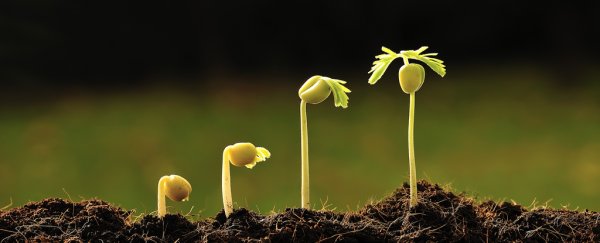Scientists have identified the genomes of close to 8,000 microorganisms from samples taken out in the field – and around a third of them are distinct from any life forms known to science, adding a crazy 20 new branches to our tree of microscopic life.
Microorganisms fall into two categories, either bacteria or archaea, and make up the vast majority of known species on the planet. But only 1 to 2 percent of them can currently be cultured in a lab, so this study looked at real-world microbes collected from some of the most extreme places on Earth, finding a mother lode of undiscovered species.
The team from the University of Queensland in Australia analysed nearly 1,500 environmental samples already logged in a public database, using some serious computing power to make sense of the DNA sequences in each one and build up a picture of thousands of genomes.
"The real value of these genomes is that many are evolutionarily distinct from previously recovered genomes," says lead researcher Gene Tyson.
"They increase the evolutionary diversity spanned by both bacterial and archaeal genome trees by over 30 per cent, and are the first representatives within 17 bacterial and three archaeal phyla."
When you consider that all animals with a backbone belong to one single phylum, or branch on the tree of life, you can see how significant the new discoveries are.
The process used by the researchers is a relatively new approach known as metagenomics, or the study of genetic material in environmental rather than cultured samples. With modern-day computing techniques, researchers can piece together the DNA sequences and identify the microbes present.
To add to the 80,000 genomes currently logged and recorded, the team found 7,280 bacterial and 623 archaeal genomes that met their quality standards for completeness.
Take, for example Uncultured Bacterial Phylum 9 – the first genomic representatives of the Terra bacteria candidate phylum SHA-109, it was isolated from baboon faeces, palm oil effluent, and other substances.
Or there's Uncultured Archaeal Phylum 2, the first representative from the Marine Hydrothermal Vent Group, and home to genomes collected from the depths of the oceans and hydrothermal vents.
The next step is to look for genes within the new genomes that resemble genes we've seen before, which could give us clues about what these microbes are like and how they act. Some of them are so different to existing genomes, though, that it could take some time.
Further down the line, this study and others like it could lead to new types of antibiotics, which are often discovered in bacteria and fungi. The research might also be used to develop new chemicals and materials for industrial use.
On top of that, uncovering so much more about the types of life on the planet can help in the study of where we all come from in the first place, and how life evolved from these tiniest of critters.
"All the questions we have about ancient evolutionary events – what our last common ancestor looked like, when methane metabolism arose, when oxygen-producing organisms evolved – they really benefit from having more genomes to look at and a more detailed tree," one of the researchers, Donovan Parks, told Alice Klein at New Scientist.
What's certain is there's a lot more out there to find. Some experts think we've only found a very small percentage of the trillions of microbial species living on Earth, though most of those will fill in gaps in existing phyla rather than needing new ones.
As the researchers point out, genome-spotting tools are continually improving, and they're confident that even more genomes can be found in the samples they worked with.
"Constructing a comprehensive genomic repository of microbial diversity lays the foundation for furthering our understanding of the role of microorganisms in critical biogeochemical and industrial processes," says Parks.
The research has been published in Nature Microbiology.
